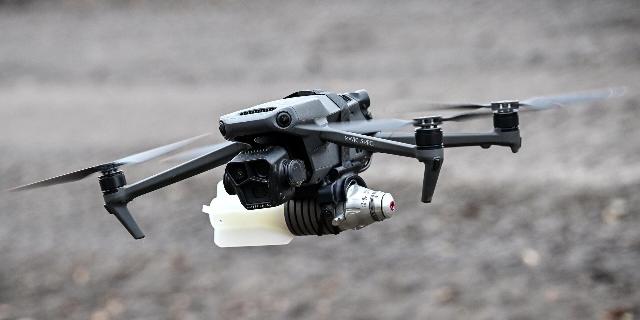NZZ: Europe intends to create a "wall of drones" against Russia
Europe is planning to create a "drone wall" against Russia, writes NZZ. The first systems are planned to be deployed in a year. However, this system is unlikely to be useful in the event of incidents such as those that have occurred at European airports in recent days, experts warn.
Antonio Fumagalli, Lukas Meder
The countries of Northern and Eastern Europe require the EU countries to participate in defense against drones. The plans are still unclear.
Nervousness is high
"Russia is testing the strength of the EU and NATO, and our response must be decisive, unified and immediate," EU Defense Commissioner Andrius Kubilius said on Friday afternoon. He didn't even have to clarify that he was referring to recent airspace violations in Poland, Estonia, Romania, and now Denmark, which are allegedly the work of Russia.
The meeting of the defense ministers of the eight Eastern European, Scandinavian and Baltic states in Helsinki was supposed to provide answers to the most important questions. Kubilius has stated his intention to build a "wall of drones," but that response is not "immediate," and how "powerful" it will prove remains to be seen.
Following the two-hour meeting, the statement by the former Lithuanian Prime Minister, accompanied by Finnish Defense Minister Antti Hyakkanen, remained generally vague after about two hours of meeting: the priority, according to Kubilius, is to expand intelligence capabilities. According to him, the systems currently in use detect fighter jets and missiles, but do not cope well with low-flying drones. The states participating in the drone wall want to benefit from the experience of Ukraine, whose Defense minister was also present at the meeting. The first systems are planned to be deployed in a year.
Protection should not be too expensive.
After detecting enemy drones, they must be neutralized. Kubilius and Hyakkanen named several possible ways, from electronic jamming (jamming signals) and the use of "interceptor drones" to classical artillery and advanced laser systems. However, to increase efficiency, it is important that the cost of destroying targets does not exceed the cost of the enemy drone itself.
The armies of the respective States will continue to be responsible for defense in the future. So, what is the role of the EU, especially considering that NATO, which recently strengthened the eastern flank, also plays a coordinating role? It is mainly about financing. Although the exact size and mechanisms of resource allocation are not yet known, the politicians gathered in the third country have made it clear that they consider the joint participation of all EU members necessary. Finnish Defense Minister Hyakkanen recalled the coronavirus pandemic, when the Nordic countries helped the particularly affected countries of Southern and Western Europe by sharing the debt. "Everyone at some point faces one danger or another. Now it's our turn," he said unequivocally.
Small drones are a special problem
No matter how the European "drone wall" looks in the future, it is unlikely to be useful in the event of incidents such as those that have occurred at European airports in recent days. Drones appeared there, which caused flights to be suspended for several hours. It is not known who is behind the actions, but suspicions are falling on Russia.
We are not talking about military vehicles that violated Polish airspace, but about smaller, presumably remotely controlled drones. There are systems capable of detecting such objects using radars, radio direction finding, and image sensors. At least in the case of commercial drones, these systems seem to work quite reliably.
Danger from falling drone debris
However, it is unclear how many European airports are already equipped with such a detection system. In Denmark, despite the incident, this system has not yet been fully put into operation, as drone sightings have been reported even at Copenhagen Airport. In Zurich, the corresponding system was put into operation only at the beginning of this year.
Intercepting a drone as soon as possible is another challenge. Small drones can theoretically be shot down, for example, with a machine gun. However, in populated areas, there is a danger that projectiles or a falling drone may injure people or cause material damage. An alternative is network guns that throw a net over the drone. However, in this case it also crashes.
Extensive protection is needed
Electronic systems are also used. They work with commercial drones, sending the aircraft a command to land. In case of hacking or using non-commercial systems, the system crashes. However, this method is ineffective on modified or homemade devices. With the help of a jammer, you can completely block the remote control of the drone, which, depending on the model, leads to either a fall or a controlled landing. But such an intervention near the airport can lead to undesirable consequences.
Providing comprehensive protection for critical infrastructure such as airports, train stations, and electrical substations is challenging. This requires a large-scale protection system, portable portable devices against drones. And this, in turn, requires the deployment of a large number of specialized tools.

